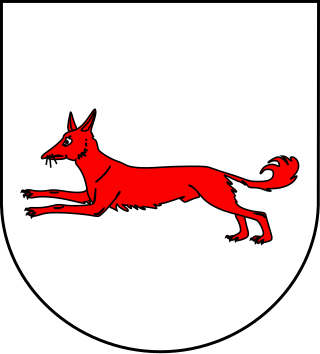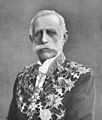
Baron Jacob Magnus Sprengtporten (1727–1786) was a Swedish-Finnish army officer and politician, and half-brother of Georg Magnus Sprengtporten. He is most famous as one of the leaders of the Revolution of 1772, the coup d'état which ended the age of constitutional monarchy in Sweden known as the Age of Liberty and ushered in the period of absolute monarchy known as the Gustavian era.

The Swedish nobility has historically been a legally and/or socially privileged class in Sweden, and part of the so-called frälse. The archaic term for nobility, frälse, also included the clergy, a classification defined by tax exemptions and representation in the diet. Today the nobility does not maintain its former legal privileges although family names, titles and coats of arms are still protected. The Swedish nobility consists of both "introduced" and "unintroduced" nobility, where the latter has not been formally "introduced" at the House of Nobility (Riddarhuset). The House of Nobility still maintains a fee for male members over the age of 18 for upkeep on pertinent buildings in Stockholm.

The Governor of a province of Finland headed the activities of the State Provincial Office until the end of 2009, when the provinces were abolished. The governors were appointed by the President. Many former ministers including but not limited to Kaarlo Hillilä, Martti Miettunen, Hannele Pokka and Anneli Taina served as governors, since the post was regarded as prestigious enough for a retiring minister, but still politically neutral. The title of maaherra was also considered a personal title, such that once appointed, the title maaherra remained for life.
Turku and Pori Province was a province of independent Finland from 1917 to 1997. The province was however founded as a county in 1634 when today's Finland was an integrated part of Sweden. It is named after the cities of Turku and Pori.

The House of Wrangel is a Baltic German noble family, whose members have also been included in the Swedish, Russian, Spanish and Prussian nobility. The family's earliest known patrilineal ancestor is the knight Eilardus (1241†).

Count Hans Henric von Essen was a Swedish officer, courtier and statesman.

The Alopaeus family is the name of an Eastern Finnish noble family originating from Vyborg. Members of the family played an important political and ecclesiastical role in the history of Russia, Finland and Sweden. Some of them have fennicized the name to Kettunen or Tuomas-Kettunen. They were ennobled in 1772 with the name Nordensvan, as part of the Swedish nobility. Later, the family was awarded with the title of Baron and Count in Russia.

The Lord of the Realm was a title of honour introduced by Gustavus III, King of Sweden shortly after his coup and the newly passed constitution. The title was granted by the King and was first received by Frederick William, Prince von Hessenstein on 15 January 1773 by letter. One of the most famous title holders was Hans Axel, Count von Fersen, the supposed lover and confidant of Marie Antoinette, Queen of France.

Baron Gustav Evertsson Horn of Marienburg was a Finnish-Swedish military man and politician. He was a member of the Privy Council of Sweden and Governor General.

Countess Christina Augusta Löwenhielm, was a Swedish noblewoman and courtier. She is known for her love affair with the later Charles XIII of Sweden. She is also famous in history as one of "the three graces" of the Gustavian age; three ladies-in-waiting immortalized in the poem Gracernas döpelse by Johan Henric Kellgren, and known profiles of the epoch.

Carl Henrik Wrangel, friherre Wrangel af Adinal was an officer of the Swedish Army, attaining the rank of Field Marshal.

Henrik Magnus von Buddenbrock was a Swedish baron and Lieutenant General. He and Carl Emil Lewenhaupt were executed for negligence in the Russo-Swedish War, in the aftermath of the defeat at Villmanstrand.
Essen is a German surname. Notable people with the surname include:

The Gustavians were a political faction in the Kingdom of Sweden who supported the absolutist regime of King Gustav III of Sweden, and sought after his assassination in 1792 to uphold his legacy and protect the interests of his descendants of the House of Holstein-Gottorp.

Ministry for Naval Affairs, established in 1840, was at the time one of the eight ministries, in which the Swedish government administration was divided into. The Ministry for Naval Affairs was established in connection with the ministry reform in 1840. Land defence and naval defence affairs, which had previously been dealt with in the War Office (Krigsexpeditionen), was now divided into two different ministries. The two ministries was in 1920 merge into the newly established Ministry of Defence.

The Wachtmeister family is a Swedish noble family from Livonia, who immigrated to Sweden in the 16th century. The name Wachtmeister is German for 'sergeant'.
Master of the Horse was a court clerk, who held one of the foremost rankings of the Royal Court of Sweden. He had the highest oversight of the Royal Stables, but this was governed by the First Crown Equerry, and he was for a time head of the state stud farm service in Sweden, thereby succeeding the former Riksstallmästaren in some of his duties.


















